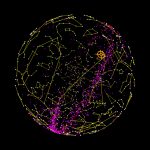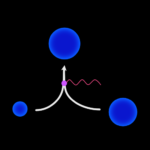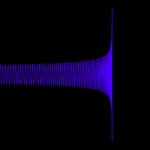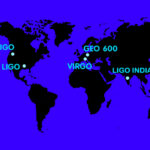Continuous gravitational waves
A vast population of a hundred million stellar remnants is hidden in the depths of our Galaxy. While we may never observe them in the electromagnetic spectrum, we might discover them through their gravitational-wave emission.
An article by Benjamin Knispel
Cosmic lighthouses born in supernova explosions
When stars at least eight times as massive as our Sun run out of nuclear fuel, their lives end in supernovae. These explosions bring forth new cosmic objects: neutron stars. Because of their strong magnetic fields and fast rotation, neutron stars emit beamed radio waves and gamma rays like a cosmic lighthouse. And just like a sailor will see flashes of light from the lighthouse, terrestrials will see the neutron star as a pulsating radio or gamma-ray source: a pulsar.
© NASA/DOE/Fermi LAT Collaboration
These objects consist of exotic, extremely dense matter, measure about 20 kilometers across and have roughly twice the mass of our Sun. One tablespoon full of neutron star matter, if brought onto Earth, would weigh as much as Mount Everest. It is not quite understood how matter behaves at these extreme densities and what the internal structure of neutron stars looks like. Models predict a solid crystal-like outer crust a few hundred meters thick, which mainly consists of ionized atomic nuclei and electrons flowing between them. Going deeper into the interior of the neutron star, the density of neutron-rich atomic nuclei and free neutrons increases. The core of the neutron stars consists almost entirely of neutrons.
Tiny bumps on neutron stars
Because of their strong gravity, neutron stars are expected to be almost perfectly spherical – every mountain would be flattened because regular matter cannot withstand the strong gravitational force at the surface. Perfectly round spheres isolated in space will not emit gravitational waves, no matter how fast they spin. If, however, a spinning neutron star is non-axisymmetrically deformed, it will emit gravitational waves.
Those deformations can come into existence because the crystalline crust is anything but regular matter. It is 20 times as hard as steel and could thus support small “bumps” on the neutron star surface that are a few centimeters high. They could form in the turbulent aftermath of the supernova or when matter from a stellar companion piles up on the neutron star’s surface. The magnitude of neutron star deformations is usually measured as an “ellipticity”, which describes how much the neutron star deviates from a perfect sphere. In case of those bumps, the ellipticity can be as large as 10-6. Other deformations could result from the neutron star’s magnetic field – it is one billion times as strong as the Earth’s. Simulations of these magnetic deformations show that they can induce smaller ellipticities as large as 10-8.
Independently of what causes the deformations: for as long they are there, a spinning neutron star will emit gravitational waves at twice its rotation frequency. This is similar to binary systems, where gravitational waves are emitted at twice the orbital frequency. About a fifth of the known neutron stars (which have been observed as pulsars) spin at frequencies of more than 5 Hertz (and up to 700 Hertz). Their expected gravitational-wave emission will therefore be in the frequency band observed by ground-based detectors such as LIGO.
Strong and transient versus faint and continuous
So far, all gravitational-wave events observed by the LIGO and Virgo detectors came from merging compact binary systems. They observed the inspiral and merger of several dozens of black holes and/or neutron stars in binary systems. The gravitational waves emitted from these compact binary mergers are transient: They are in the LIGO/Virgo frequency band for fractions of a second to up to more than a minute before they end.
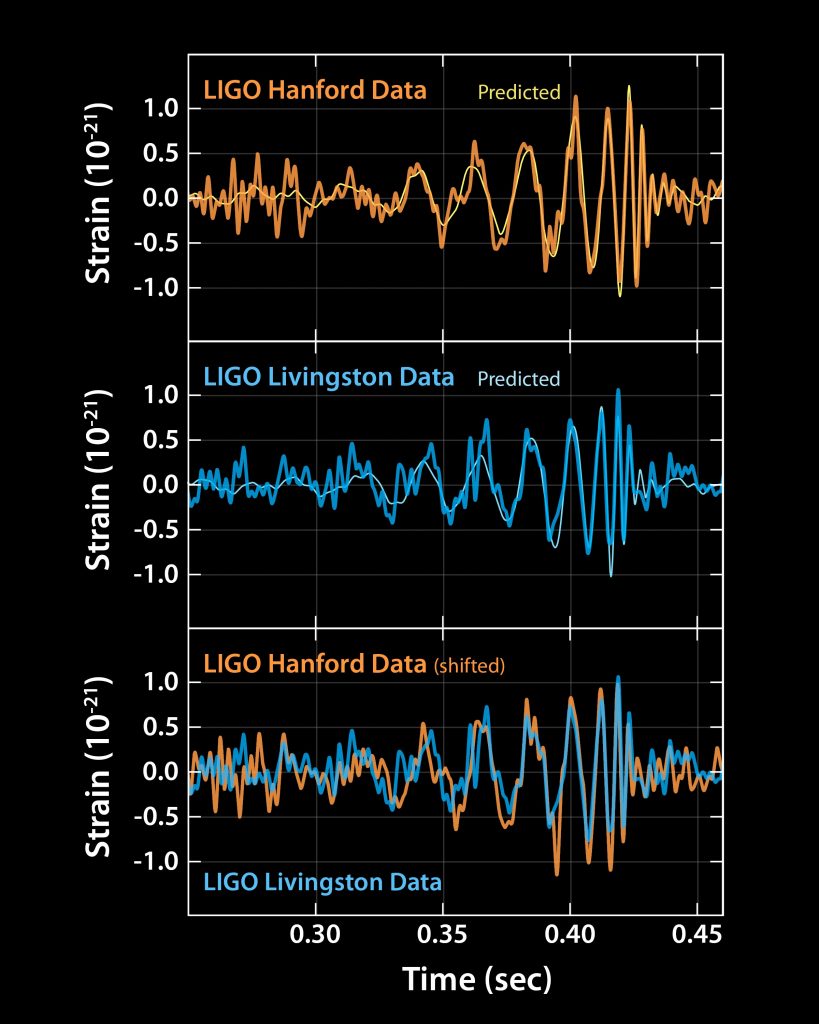
© Caltech/MIT/LIGO Laboratory
In contrast, the gravitational waves emitted by rapidly spinning neutron stars are continuous and much fainter than the transient signals from compact binary systems – at least by a factor of 10,000. On the positive side, they are continuous, and the signal is simple. By analyzing long stretches of data, even very faint signals can be pulled out of noisy detector data. Once a signal has been identified, it can be repeatedly observed as detectors and analysis methods improve. But the search is computationally very demanding.
How do we search for continuous gravitational waves?
The gravitational waves emitted by pulsars are almost monochromatic, i.e., have a single frequency, which decreases over time due to the emission of energy in the form of gravitational and electromagnetic waves. Finding faint nearly monochromatic gravitational waves in detector noise is generally straightforward, but the reality is more complicated and computationally much more demanding. For a start, while the emitted gravitational waves might be monochromatic, the signal that can be observed on Earth isn’t – and that is due to the motion of the observer.
The detectors sit on the surface of the Earth, which spins around its axis. The resulting motion of the detectors relative to the neutron star causes a Doppler shift of the observed gravitational-wave frequency, which depends on the time and the position of the neutron star relative to the detector. On top of that, the Earth orbits the Sun, which causes an additional Doppler shift.
As a consequence, a search for unknown sources of continuous gravitational waves needs to take into account combinations of the following parameters, which describe the signals: sky position (two parameters), frequency (one parameter), spin-down (one parameter). Because the expected signals are faint, long data stretches covering months of observations need to be analyzed. A tiny offset in one of the parameters would cause the search to possibly miss a signal hidden in the detector noise. Get the frequency just very slightly wrong and the signal will not show up in the analysis – same for an offset in the sky position or the spin-down. To minimize these possible losses of signal and to maximize the detection probability, the data is combed through very finely by using a large number of parameter combinations.
All-sky searches versus directed searches
For an all-sky search (unknown sky position) over a wide frequency range (frequency and spin-down unknown), the best possible search – using all available data in one long stretch – is computationally impossible. The required computing power exceeds by far what is available. The data are therefore split up into smaller chunks, which are analyzed in the optimal way. The results from these chunks are then combined, in order to obtain a search that is almost as good as the optimal one. Still, large computer clusters or distributed volunteer computing projects like Einstein@Home are required to conduct these searches.
If the sky position is (roughly) known, the number of unknowns is a lot smaller. In these directed searches, only the unknown frequency, the spin-down and a few neighboring sky positions must be searched over. Examples are searches for continuous gravitational waves from the central objects in young supernova remnants.
If a neutron star has been observed as a pulsar, all the relevant search parameters – sky position, frequency and spin-down – are known. In that case, the search for gravitational waves from this object becomes an easy task and does not require large amounts of computing power. These searches have been used to define upper limits for the strength of gravitational waves emitted from known neutron stars.
What can we learn and what have we learned?
The first detection of continuous gravitational waves will provide the first glimpses into the vast hidden population of neutron stars in our Galaxy. So far, only 3000 neutron stars are known and have been observed as pulsars. We expect about 100 millions of them in the Milky Way. Gravitational waves will be an entirely new way of probing this unseen population. Observations of continuous gravitational waves might also shed light on the hitherto unknown internal structure of neutron stars, the behavior of matter at the extreme conditions, and improve our understanding of stellar evolution.
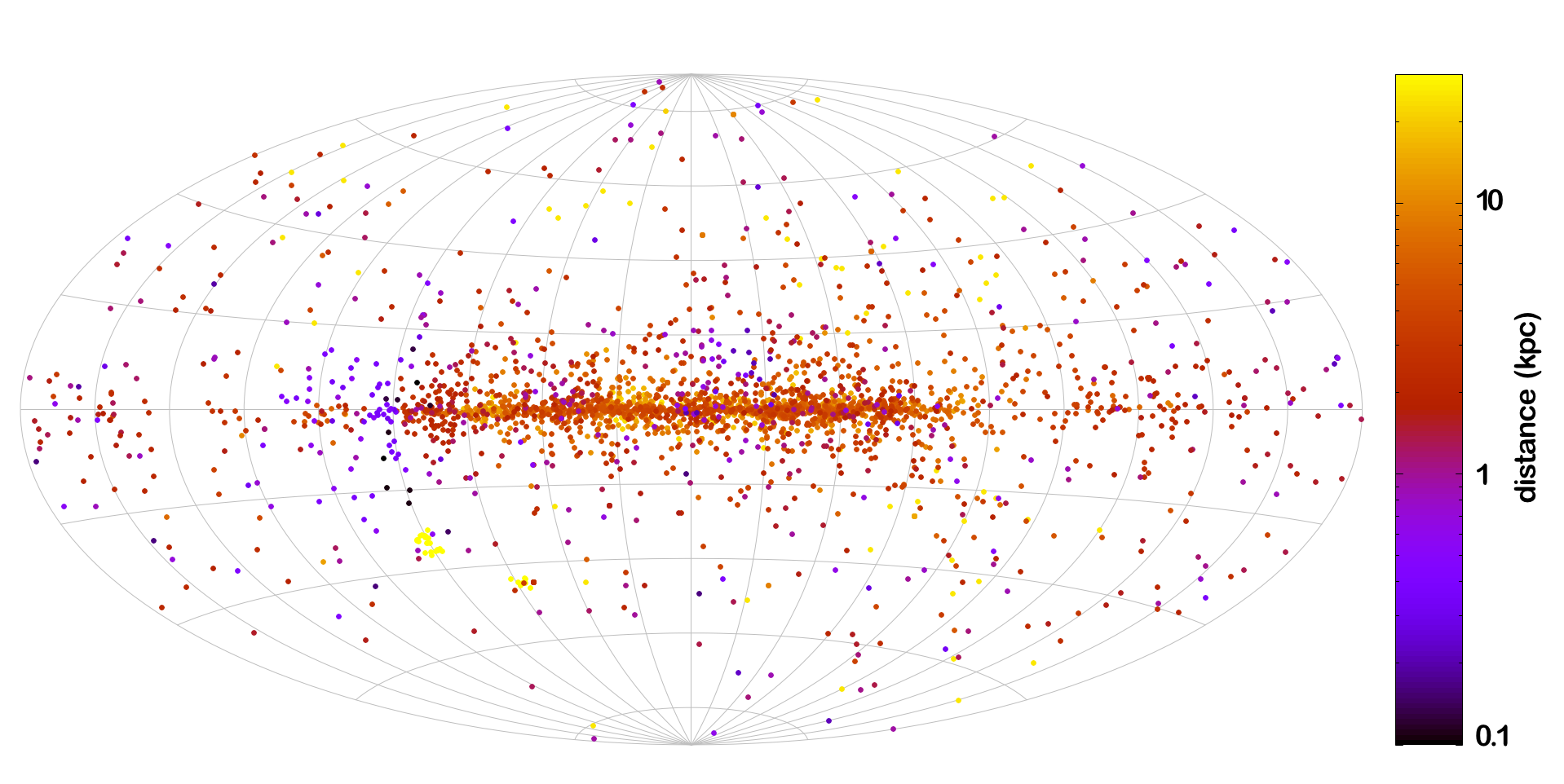
While no continuous gravitational-wave signal has been observed to date, the searches themselves have already provided insights into neutron star physics and the hidden population of these objects.
The distributed volunteer computing project Einstein@Home conducts the most sensitive all-sky search for continuous gravitational waves in LIGO data. The results from an Einstein@Home all-sky search for continuous gravitational waves in data from LIGO’s second observing run (O2) exclude neutron stars with rotation frequencies above 200 Hertz and with ellipticities larger than 10-7 (which are predicted by some models of neutron star crusts) within 100 parsecs (i.e., 326 light-years) from Earth.
Other all-sky searches at higher gravitational-wave frequencies exclude deformations of less than 10-8 for neutron stars within 170 parsecs (554 light-years) from Earth. This corresponds to neutron star deformations as small as a few strands of human hair!
Einstein@Home has also conducted directed searches for continuous gravitational waves from the central objects in three supernova remnants. These searches of the remnants called “Vela Jr.”, “Cassiopeia A”, and “G347.3” found one possible signal associated with G347.3 in the LIGO O2 data. Data from LIGO’s third observing run (O3), which are less noisy than earlier data, should suffice to test whether this potential candidate is real or not. Similar LIGO searches of other young supernova remnants did not reveal any signal candidates.
LIGO scientists searched for gravitational waves from 221 known pulsars and did not detect any signal. However, the absence of a signal allows researchers to set limits on how much energy is emitted in gravitational waves. Compared to the total energy loss – observed through the spin-down – the most stringent limits are 0.02% and 0.2% for the Crab and Vela pulsar, respectively.
What the future might bring
While data from the third, most sensitive observing run are analyzed, the current gravitational-wave detectors are being upgraded for their fourth observing run, O4, which is expected to start in the summer of 2022. With ever increasing sensitivity, the detectors will be able to pick up continuous gravitational waves from ever greater distances or fainter signals from near-by sources. One way or another, the chances to detect this missing kind of gravitational waves keep growing – and with them the possibility to learn something entirely new about neutron stars, matter under extreme conditions and our Milky Way.
Further Information
Colophon
is an astrophysicist and press officer at the Max Planck Institute for Gravitational Physics (Albert Einstein Institute) in Hanover, Germany.
Citation
Cite this article as:
Benjamin Knispel, “Continuous gravitational waves” in: Einstein Online Band 13 (2021), 1012



